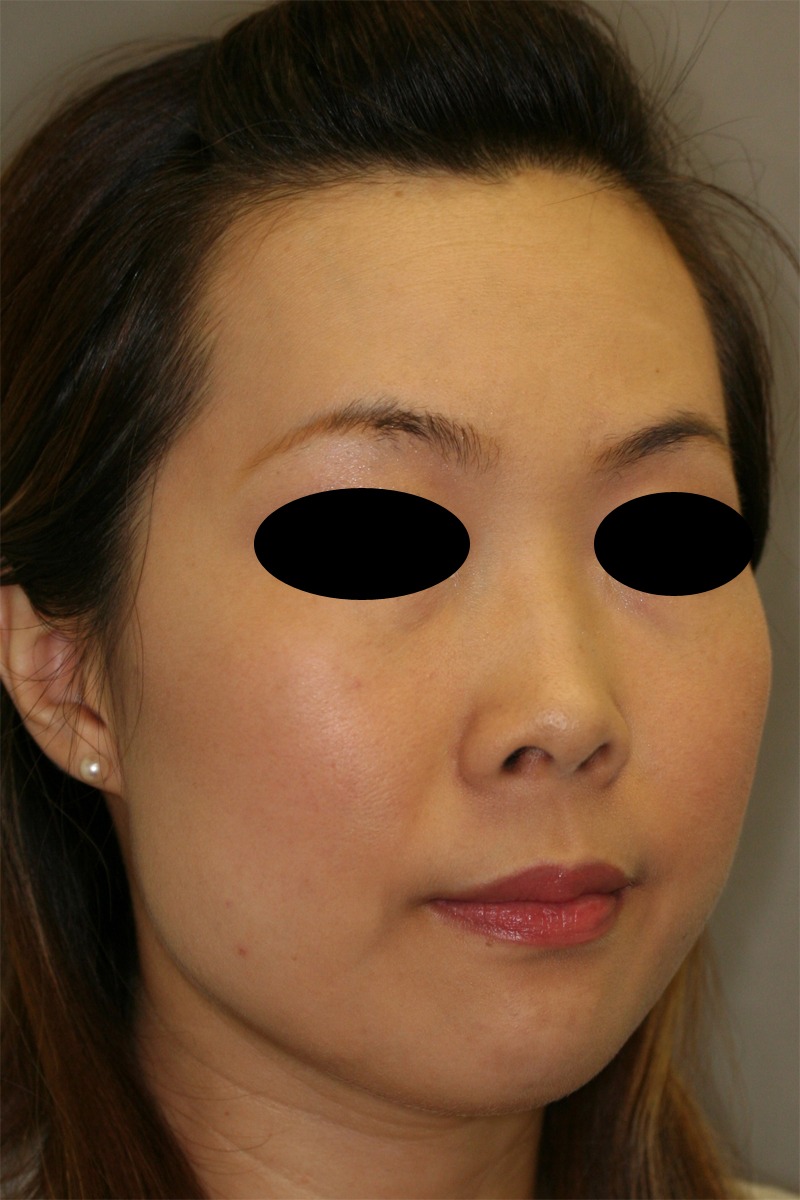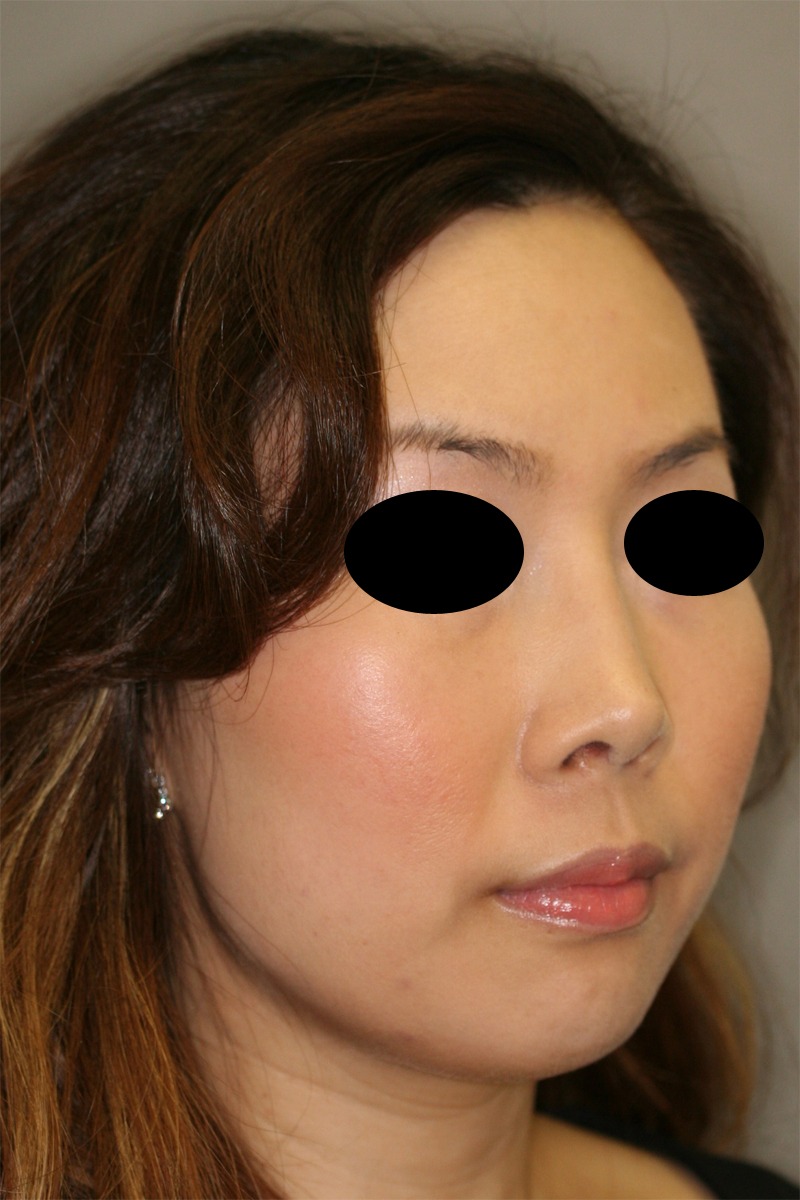Asian Rhinoplasty Pasadena
Conveniently located to serve Arcadia, CA
Dr. Chow performs a significant number of nose surgeries on patients of Asian descent each year. These noses have unique features that present specific cosmetic concerns. For example, the nasal bridge may be very low, making the nose appear short and squat. Wearing glasses of any kind may be difficult without a bridge to the nose to help hold them up. There are even those who use makeup to produce the illusion of shadows on either side of the nose, providing it with a more three-dimensional appearance. This issue is one that is commonly addressed in Asian rhinoplasty, but may not be addressed in rhinoplasties for those with “humps,” or nasal bridges that are too large.
Another common feature among Asian noses is a wide nasal tip (near the nostrils) that is round and has little support, therefore projecting too little from the plane of the face. In order to produce a taller, thinner, and more sculpted appearance to the lower half of the nose and nasal tip, multiple techniques may be used. Dr. Jen Chow has experience with several different techniques and can use the one that will best fit your unique nose.
At the Chow Center, you can choose between surgical or nonsurgical techniques for nasal reshaping, depending on your specific aesthetic goals. Dr. Chow will take the time to discuss your concerns and together, you will be able to decide on the ideal treatment plan.
Preparation
While there are many similarities to any nasal surgery, with common techniques and approaches, there are some aspects that are far more common among those of Asian descent. For example, many, though certainly not all, Asian rhinoplasties involve increasing the height of the nose. This is achieved by raising the bridge, or nasal dorsum, and also increasing tip projection, or the distance that the tip of the nose projects from the face. The nasal cartilage that forms the framework for the lower two thirds of the nose in Asians may also be thinner, with less ability to support the heavy skin that may cover it. Therefore, unlike primary rhinoplasty for Caucasians, there may be a need to add to aspects of the nose, such as the bridge, even while the nasal tip and nostrils are refined to look smaller or more proportionate to the rest of the face.
Before the Procedure
During your initial consultation, Dr. Jen Chow will perform a complete history and physical examination of your face and nose to determine if Asian rhinoplasty, or nasal reshaping, is the appropriate solution for your cosmetic concerns. In some cases, nonsurgical rhinoplasty is a viable temporary alternative. The two of you will then discuss the procedure in full. In many cases, the use of digital imaging to see what the nose might look like after surgery is a powerful tool that can significantly assist in communication between you and your facial plastic surgeon.
Once you have decided to have surgery, Dr. Chow will fully explain the risks and benefits of the procedure, taking the time to answer any and all questions you may have.
A thorough work up based on your age, health history, and any risk factors you might have (previous surgery, certain habits such as tobacco use, over the counter nose sprays, specific vitamins and supplements) will be reviewed. In order to be certain that you will be safe for the procedure, specific tests or a consultation with your primary care physician may be needed.
You will be provided with written instructions regarding what to do in the weeks leading up to surgery. Foods, supplements, and even vitamins that may thin the blood should be avoided. Aspirin, ibuprofen, Alleve, and other over the counter non-steroidal inflammatory medications (NSAIDs) should be avoided as well.
Should you have any questions prior to the procedure, you should always feel free to contact Dr. Chow. He will be more than happy to answer your questions.
The Procedure
Most Asian rhinoplasty procedures that are performed by Dr. Jen Chow are done in a fully accredited outpatient surgery facility. Depending on the specifics of your procedure, you may have twilight sedation, where you will be comfortably resting, but breathing on your own, or general anesthesia, in which your airway is fully protected.
You will be given specific instructions leading up to your procedure. Some helpful tips for the day of surgery include: avoiding clothing that must be pulled over the head (zippered or buttoned shirts are recommended), leaving jewelry and valuables at home, and keeping the face and hair free of makeup and hair sprays or gels, respectively.
If all you desire is an implant to raise the bridge of the nose, you may undergo the closed rhinoplasty approach. Should you desire to refine, change the projection of, or rotate the nasal tip in order to improve its appearance Dr. Chow will likely perform an open rhinoplasty. You can learn more about the approaches by reading the rhinoplasty description.
Often, the simplest, most direct and effective way to improve the look of the Asian nose (making it longer, with a taller bridge, and with more refined tip and nostrils) is to simply use a composite implant. However, Dr. Chow is also well versed in the use of your own cartilage to achieve excellent results. Cartilage from the nose itself, from the ears, and from rib cartilage can be used for augmentation and reshaping the nose. In order to change the shape of the tip, Dr. Chow almost always uses cartilage rather than a synthetic implant.
When only dorsal augmentation (raising the nasal bridge) is required, Dr. Chow favors the closed technique, in which any and all incisions are made inside the nose, with no visible scarring outside the nose. For more complex changes including the tip or nostrils, the open technique may be used. This allows for more direct visualization of the area and includes a small, inverted “V” incision on the columella, which is the portion of the nose that separates the two nostrils.
The nostrils can be reduced in size either during the surgery or later, as an office procedure. Realizing that the primary function of the nose is to breathe plays an important role when deciding on changes of the nose. Having a nose that looks great, but causes constant congestion and breathing difficulties is not the right choice. Because Dr. Chow is a facial plastic surgeon, he understands the nose inside and out, and can provide the nose with both form and function.
Recovery Info
After the Procedure
After surgery, a splint is placed over the nose for one week. This protects the nose during its initial phase of healing. Many patients have minimal bruising and only mild swelling. However, both can and do occur on an individual basis.
If you have the placement of an implant, diced cartilage graft, or cartilage graft, remember that a forceful blow to the nose can dislodge these in the first weeks after surgery. Avoid contact sports for at least six weeks after surgery. You may not be able to wear glasses for at least a month after surgery, since they are designed to rest on the bridge of the nose. Remember that the final results of rhinoplasty can take up to a year after the surgery.


* Individual results may vary.
FAQ
-
How does Asian Rhinoplasty (nasal reshaping) differ from more traditional Western rhinoplasty?
The major differences between Asian noses and those of their Caucasian counterparts include the height of the bridge and the width of the tip and nostrils of the nose. Many Asian noses need greater height and projection of the nose, as well as refinement of the tip and nostrils, while Western noses often need to be reduced. Of course, there are many more subtle differences, as well as cultural and personal aesthetic preferences, that must also be taken into account. Your nose is unique, and your rhinoplasty should be, too.
-
What are the typical characteristics of an Asian nose?
Asians generally have thicker skin, often accompanied by more numerous sebaceous glands. The cartilage is often thin and weak, providing less support to the heavier skin covering. This leads to a flatter, lower nose, particularly at the tip. The nostrils, or nasal alae, may also appeared flared or wide. In addition, the bridge (or nasal dorsum) of the nose can appear to begin very low in the face, giving the nose a shortened appearance. Finally, because Asians may have a flatter midface (roughly the area between the lower eyelids and the upper lip), the nose may sit on a foreshortened bone (the maxilla) that is behind the upper lip, giving it a flatter profile.
-
Are all Asian noses the same?
They are not. There are certain trends depending on ethnicity, but each of us is unique. For example, Southeast Asian noses may have lower nasal bridges and wider, flaring alae (nostrils). Southeast Asians can include those of Burmese, Cambodian, Filipino, Indonesian, Laotian, Malaysian, Thai, and Vietnamese descent. Those from Eastern Asia, including Chinese, Japanese, and Koreans, often need less nostril narrowing (alar reduction).
-
Is there a non-surgical method for Asian rhinoplasty (nasal reshaping)?
Yes. At the Chow Center, those who qualify can also have a 10 minute nonsurgical procedure to enhance the appearance of the nose. More information is included in the nonsurgical rhinoplasty section. In order to find out if you qualify, simply schedule a consultation with Dr. Chow.
-
How is the Asian rhinoplasty done?
To learn more about the techniques used and what to expect before and after surgery, simply click to review the Asian Rhinoplasty Description page.
-
Will I need an implant if I have an Asian rhinoplasty?
Because many Asian noses have low nasal bridges that need to be lengthened and raised, implants are frequently used in Asian nasal reshaping. Dr. Chow prefers to use either cartilage from the patient or an advanced composite implant. The best way to determine what is right for you is to discuss this in detail during your consultation.
-
What is the recovery time for an Asian rhinoplasty?
Most patients look great within a week of surgery, with minimal bruising, if any. You may return to work or school and engage in most of your usual daily activities. After two weeks, moderate exercise is fine, and after three weeks, any non-contact sports should be fine. If an implant or dorsal cartilage grafting is done, waiting six weeks before engaging in activities where the nose may be accidentally struck (e.g., kickboxing, football, baseball) is highly recommended.

